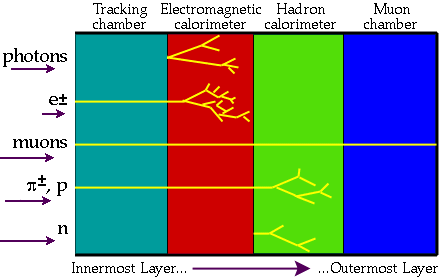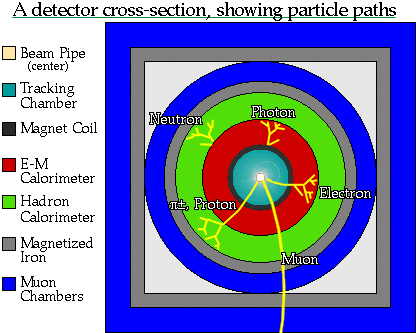Detectors
Particle detectors are the tools used by physicists to explore the
interior of matter.
Take a look at the DELPHI
detectors
Introduction to detectors
When colliding high energy particles it is possible to create the
conditions necessary to explore the interior of matter and to create
new types of matter. To observe and identify the well known particles
and also the possibly new states of matter, very sophisticated
detectors are needed.
Modern detectors consist of many different components.
The aim of the complex system of detectors surrounding the collision
point is to:
- identify the particles
- determine their energy
- determine their direction
The type of produced particles, their energy and direction reveal the
secrets of the collision mechanism and the interior of matter.
The components of the detectors are stacked in such a way that
the produced particles will go through the different layers.
An experiment consists of a large number of detectors, each of them
having a well-defined task. Combining the information from all of them
will produce a detailed picture of what happened in the particle
collision. There are three main types of particle detectors:
- track detectors to determine the trajectory of charged particles
- calorimeters to determine the energy of both charged and neutral
particles
- muon detectors to detect and identify muons
Below, a schematic picture of how various particles interact with the
different components of a detector can be seen.

CPEP Illustration (http://www-pdg.lbl.gov/cpep/images/decay_chart.gif)
To visualize the path that particles take through a detector,
below is a cross-section view of a detector (looking down the
tube the colliding beams come from). Note the different places
where the different particles will be detected.

CPEP Illustration (http://www-pdg.lbl.gov/cpep/images/end_view.gif)
Schematic drawing of a typical modern detector
How such detectors look in reality is shown in the following pictures:
DELPHI tracking detector
DELPHI calorimeters and muon chambers
All information is registered electronically, and visualized by
computers. The following pictures show examples of reconstructed
reactions.
Z0 decays


